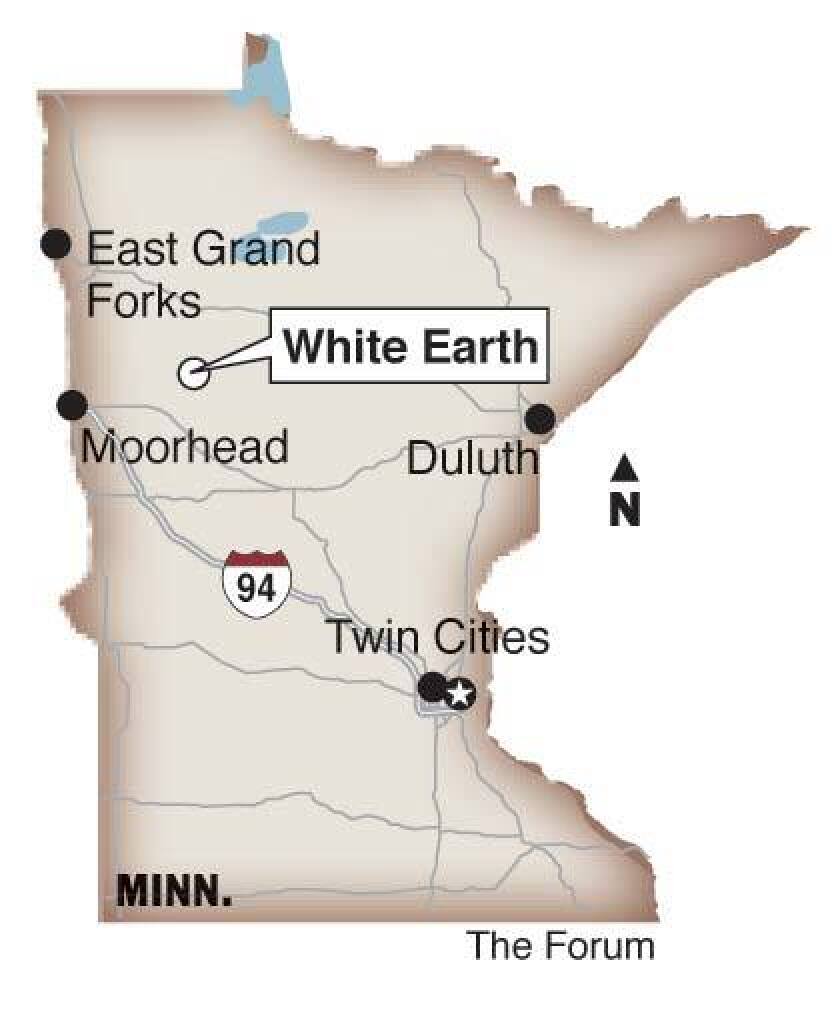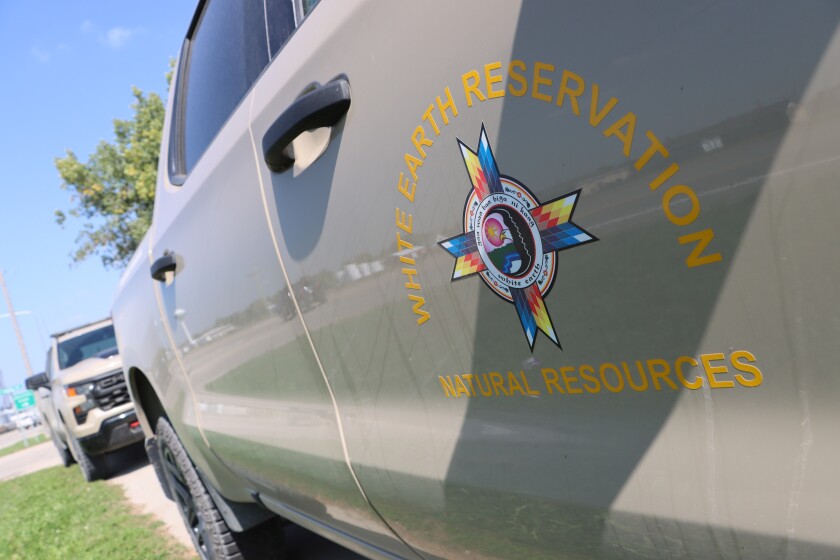WHITE EARTH, Minn. — , the band itself believes it retained the right to control natural resources like water through its treaties with the U.S. government.

, in addition to the Minnesota Department of Natural Resources permit.
ADVERTISEMENT
The reservation covers 829,440 acres, or about 1,300 square miles, in northwestern Minnesota. The reservation includes all of Mahnomen County and parts of Becker and Clearwater counties, and is the largest of seven Chippewa reservations in the state.
Part 1: Battle brews with farmers as White Earth Nation asserts authority over water rights
Part 2: White Earth Nation says water ordinance is allowed under 20th century treaties
Part 3: (Coming Oct. 25) White Earth Nation works on move toward sustainability, food sovereignty
Part 4: (Coming Oct. 26) As business withdraws, Minnesota leaders side-step White Earth Nation water dispute
Part 5: (Coming Oct. 27) Minnesota farmers express concern over future of agriculture near White Earth Nation
According to a history page on the White Earth Nation website, the largest American Indian group in Minnesota calls itself Anishinaabe, or “original people.” Europeans called them “Ojibwe,” which became “Chippewa.” The “White Earth” descriptor comes from a layer of white clay underlying the western half of the reservation, including prime farmland.
The White Earth Reservation was established on March 19, 1867, by the U.S. government and the Mississippi Band of Chippewa Indians. Subsequently, the reservation got smaller. In 1889, Congress passed the Nelson Act, relocating tribal members to the White Earth Reservation. Tribes would contend that the vote counted adult Chippewa males, instead of the proper tribal councils. White people — who had a vested interest — supervised the vote counts.
Federal lawsuits in 1905 and 1908 gave tribes the right to water rights to fulfill purposes of the reservation “now and into the future.” In 1906, Congress passed a law that enabled tribal family heads to receive 80-acre allotments and each child to receive 40-acre parcels. Lands not taken up for allotments became “surplus,” and could be sold to non-tribal members. Some allotments went to tribal members. Most went to farmers of European extraction.
The Minnesota Chippewa Tribe on June 18, 1934, established a Reservation Business Committee to govern it. The tribe later established the White Earth Natural Resources Department and an agricultural division.

In 1986, the White Earth Land Settlement Act required transferring 10,000 acres of state/county land to a tribal-owned land trust, in exchange for cleared titles on 100,000 acres of privately owned land, as well as $6.5 million, which was used to start the Shooting Star Casino, a 390-room hotel.
Today, 51% of the reservation land is privately owned, in a category called “fee patents,” which account for much of the farmland. “Fee patent” means that a tribal member received an initial allotment of property on the reservation and the property changed hands. Another 49% is owned by governments — 17% county; 15% federal; 10% tribe; and state, 7%.
ADVERTISEMENT
. Fewer than 10,000 people live on the reservation land and on off-reservation trust land, according to U.S. Census data, mostly in a group of small communities. Mahnomen is the largest town. The tribe employs nearly one in five people.
, according to the Census Bureau.
Private landowners pay county taxes. The tribe pays property taxes until it gets land into a trust, which involves federal approval.
The region of White Earth Nation receives an average of about 22 inches of rain in a year, but farms there irrigate for supplemental moisture on certain soils.
The tribe cites its water permit authority to 1908 and 1963 cases that allow them to preserve “customary ways of life, including hunting, fishing and gathering” as well as adopting “new ways of life.”

According to a notice of the ordinance enacted on May 5, 2023, the White Earth Department of Natural Resources, “working with relevant scientific and community experts,” has identified “threats” to the band’s “health and welfare, spiritual subsistence, water rights and other treaty rights and treaty-protected natural resources” from the “individual and cumulative operation of high-capacity wells and high-capacity surface water pumps on the White Earth Reservation and in the five-mile buffer area immediately surrounding the White Earth Reservation.”
Reservation Business Committee Chairman Michael Fairbanks said the tribe has been “diminished to such a small piece of land” and said the tribe has established a “jurisdictional area” to protect. Asked whether he expects this water authority will ever extend farther than the 5-mile border around the reservation, Fairbanks alludes to the 1855 Treaty Authority, when the reservation area was far bigger, extending to the Red River, north of Moorhead.
ADVERTISEMENT
Jamie Konopacky, now White Earth Band’s outside counsel on environmental issues and formerly an in-house attorney for the band, answered this way: “There is no intention to expand the geographic scope of this ordinance.” It isn’t clear whether future ordinances would be different.










